Thermal Loops
From an early age, we develop an intuitive understanding of hot and cold.








From an early age, we develop an intuitive understanding of hot and cold.







Thermal, or heat energy, is the energy contained in the vibration of an object’s molecules. We measure this through temperature.
“Cold energy” does not exist. Objects that are cold have less thermal energy. Thermal energy flows from hotter to colder objects.
Thermal energy affects every aspect of our lives, including the buildings we spend most of our time in.
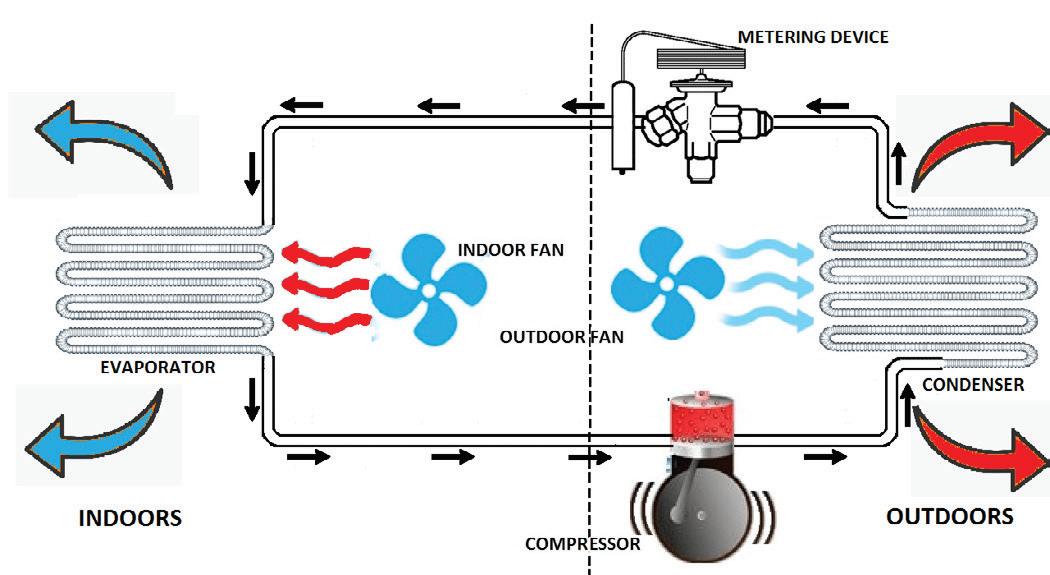
Air conditioning transfers heat from inside to outside using compressed refrigerant.
Sandium Air Conditioning. Exploring Air Conditioner Basics: Thermodynamic. https://www.sandium.com/ advice/air-conditioner-basics-part-ii-thermodynamics. Accessed 2 Dec. 2024.
Enforcing this thermal gradient requires a lot of electricity, which is often produced with fossil fuels. At the same time, indoor cooling is becoming more necessary as summers get hotter. This creates a vicious cycle.
Air conditioning amplifies the very conditions being conditioned against in the first place (Craig).
According to the EPA, we spend 90% of our time indoors
US EPA, OAR. Improving Your Indoor Environment. 13 Oct. 2021, https://www.epa.gov/indoor-air-qualityiaq/improving-your-indoor-environment.
Advances in building insulation and HVAC systems allow us to construct the same buildings in completely different climates. Architecture has largely become divorced from its surroundings.
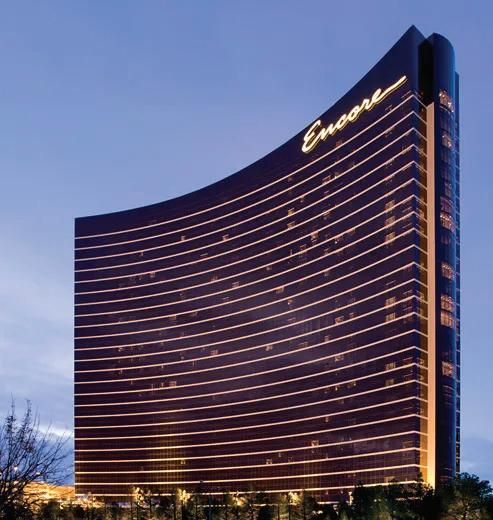
Architectural Digest. Encore. https://www.architecturaldigest.com/story/hotels-encore. Accessed 2 Dec. 2024.
Encore Boston is LEED Platinum, one of the highest energy efficiency ratings available. This is achieved by highly insulating the building from its environment. It is treated as a closed system even though energy exchanges still occur through mechanical conditioning.
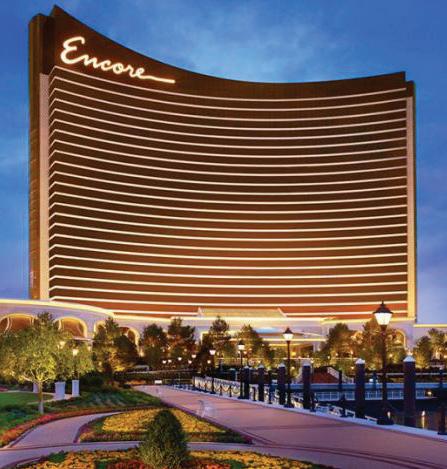
Jacobs. Encore Boston Harbor Resort. https://www.jacobs.com/projects/encore-boston-harbor-resort. Accessed 2 Dec. 2024.
Vernacular Architecture noun architecture indigenous to a region constructed with local materials, techniques and cultural knowledge; often intimately connected to the climate
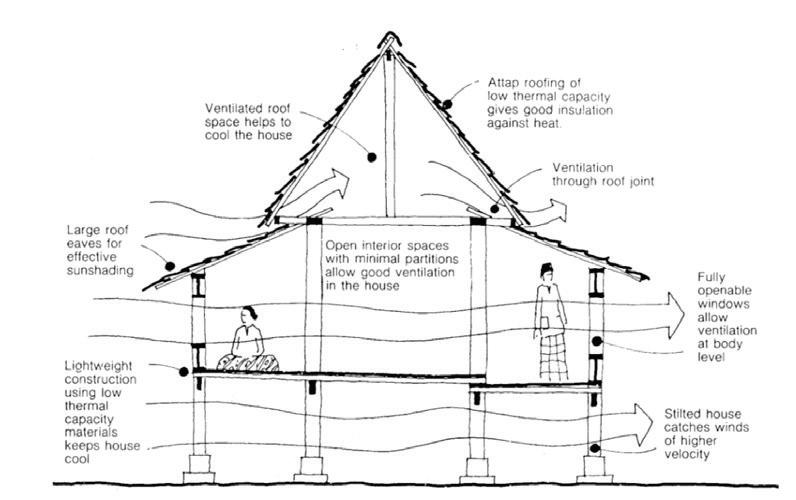
Climatic strategies of a traditional Malaysian home
(Asmalia et al. 177)
Vernacular, or traditional architecture, typically utilizes a different approach to mediating climatic conditions. Instead of resisting external thermal changes, it embraces them to cool or heat the interior.
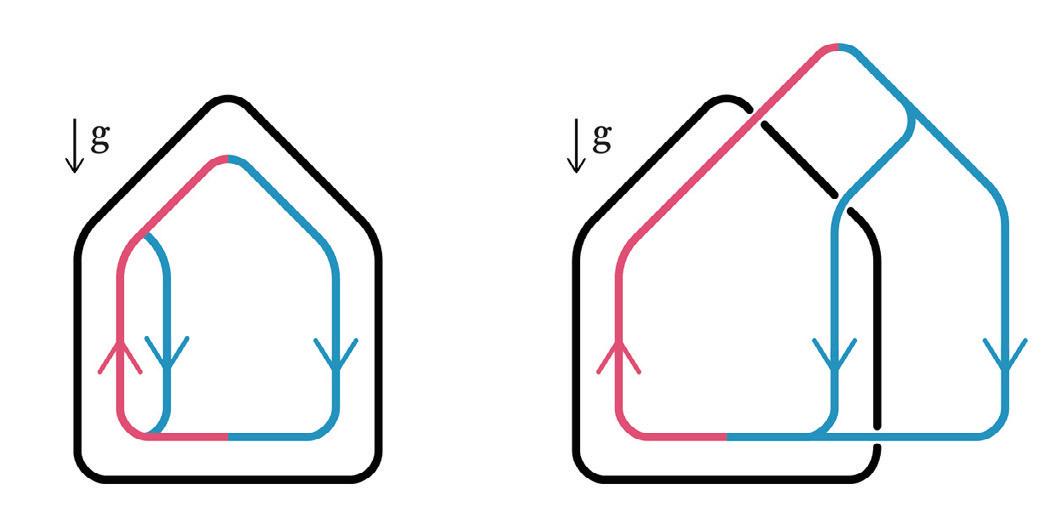
Vernacular architecture, such as the traditional dwellings of Malaysia, utilize natural ventilation, local materials and surrounding vegetation as a passive form of air conditioning.

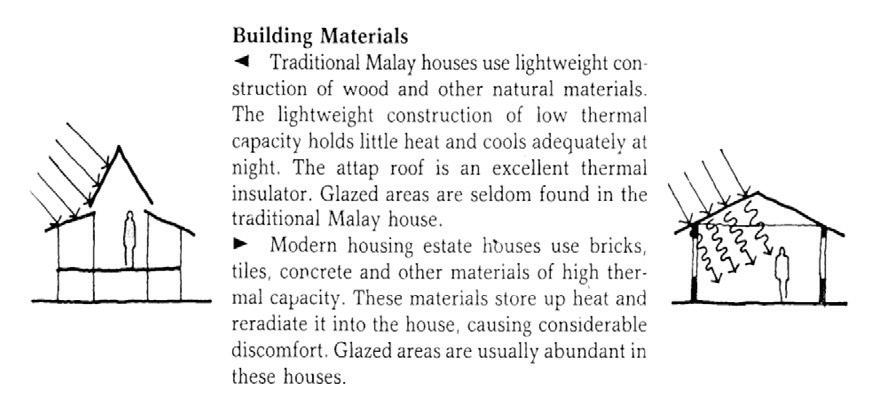

(Asmalia et al. 177)
Hot air has greater thermal energy and is less dense than cold air - it naturally rises and stratifies near the ceiling. High level apertures in the roof let out hot air and bring in cooler air from below.
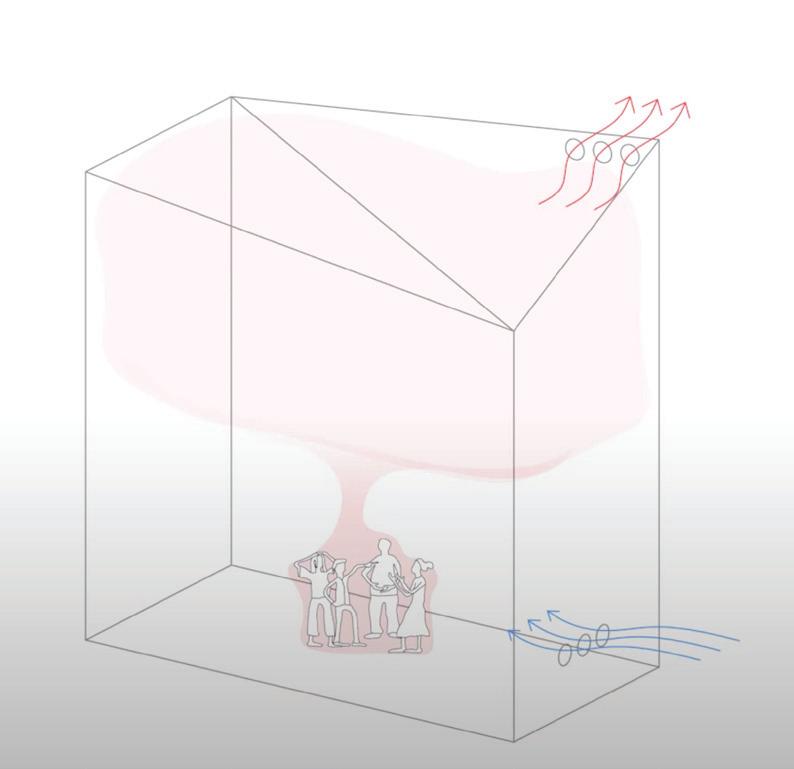
(Craig. Water bath demonstrations of two buoyancy ventilation modes: displacement vs. mixing)
The Ministry of Energy, Green Technology and Water Building (MEGTW) in Putrajaya, Malaysia, adopted many of the passive cooling strategies found in vernacular Malaysian architecture.

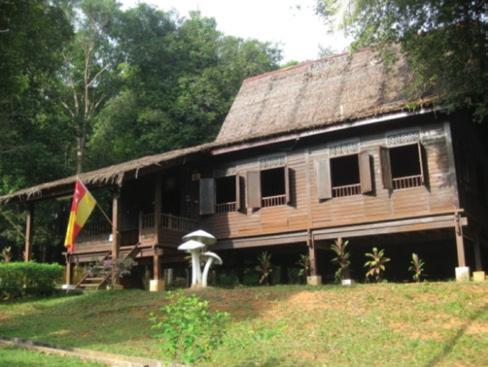
Like the traditional Malay House, windows on the MEGTW building are shaded to limit solar heating
(Ramli et al.)
The MEGTW building was also designed with an open atrium in the center. This creates a thermal flu to funnel hot air out of the building similar to roof vents in vernacular homes.
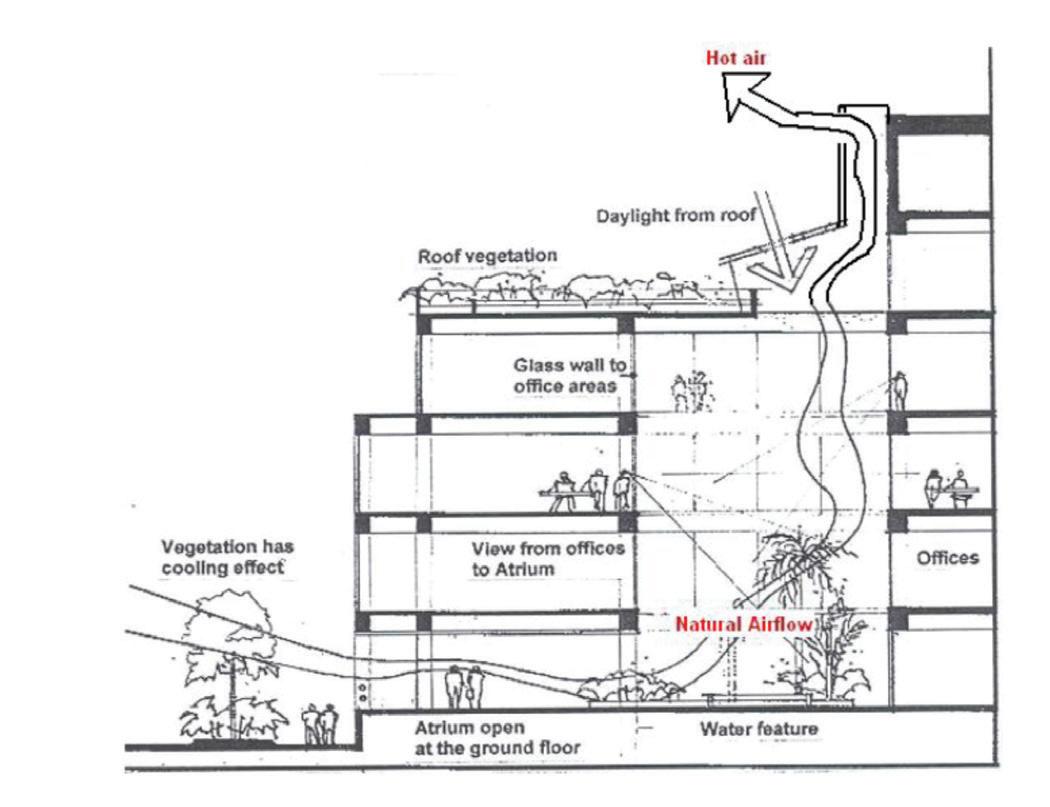
(Ramli et al.)
In rediscovering the climatic strategies of vernacular them to modern designs. Modern architecture architecture and the environment that is not
Conditioning buildings passively through open a crucial shift in how we conceptualize modern climate is rapidly changing, adopting these resilient future.
vernacular architecture, we can apply architecture has enforced a separation between not sustainable. open thermodynamic systems represents modern architecture. In a world where our strategies will help us build a more
Brown, Grant. “Vernacular Architecture: Local Traditions Meet Regenerative Design.” Happy Eco News, 8 Nov. 2023, https:// happyeconews.com/vernacular-architecture-regenerative-design/.
Coch, Helena. “Chapter 4—Bioclimatism in Vernacular Architecture.” Renewable and Sustainable Energy Reviews, vol. 2, no. 1–2, June 1998, pp. 67–87. DOI.org (Crossref), https://doi.org/10.1016/S13640321(98)00012-4.
Craig, Salmaan. “Lost Loops.” E-Flux Architecture, 2024, https:// www.e-flux.com/architecture/after-comfort/589840/lost-loops/.
Desogus, Giuseppe, et al. “Bioclimatic Lessons from Mediterranean Vernacular Architecture: The Sardinian Case Study.” Energy and Buildings, vol. 129, Oct. 2016, pp. 574–88, https://doi.org/10.1016/j. enbuild.2016.07.051.
Kamal, Kamarul, et al. “Climatic Design of the Traditional Malay House to Meet the Requirements of Modern Living.” The 38th International Conference of Architectural Science Association ANZAScA, Nov. 2004, chrome-extension://efaidnbmnnnibpcajpcglclefindmkaj/ https://anzasca.net/wp-content/uploads/2014/08/ANZAScA2004Kamal.pdf.
Lessons from the Past - Biobased Design and Vernacular Architecture Part 1 - Dutch Design Week 2020. Directed by Kathryn Larsen, 2020. YouTube, https://www.youtube.com/watch?v=vqCp63xPZkY.
Lessons from the Past - Biobased Design and Vernacular Architecture Part 2 - Dutch Design Week 2020. Directed by Kathryn Larsen, 2020. YouTube, https://www.youtube.com/watch?v=zSDjVIdmsJs.
Noble, A. G. Traditional Buildings: A Global Survey of Structural Forms and Cultural Functions. I.B. Tauris & Company Limited, https://books. google.com/books?id=VUstzAEACAAJ.
Ramli, Nur. “Re-Adaptation of Malay House Thermal Comfort Design Elements into Modern Building Elements – Case Study of Selangor Traditional Malay House & Low Energy Building in Malaysia.” Iranica Journal of Energy & Environment, vol. 3, Jan. 2012, https://doi. org/10.5829/idosi.ijee.2012.03.05.04.
Water Bath Demonstrations of Two Buoyancy Ventilation Modes: Displacement vs. Mixing. Directed by Salmaan Craig. YouTube, https:// www.youtube.com/watch?v=0YLXck34ies. Accessed 2 Dec. 2024.